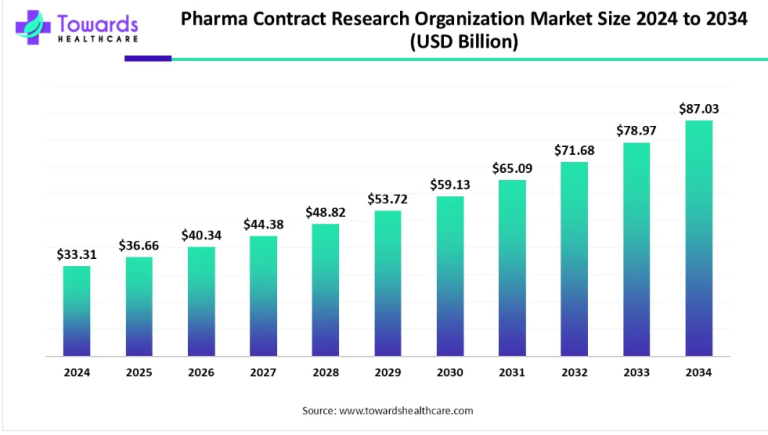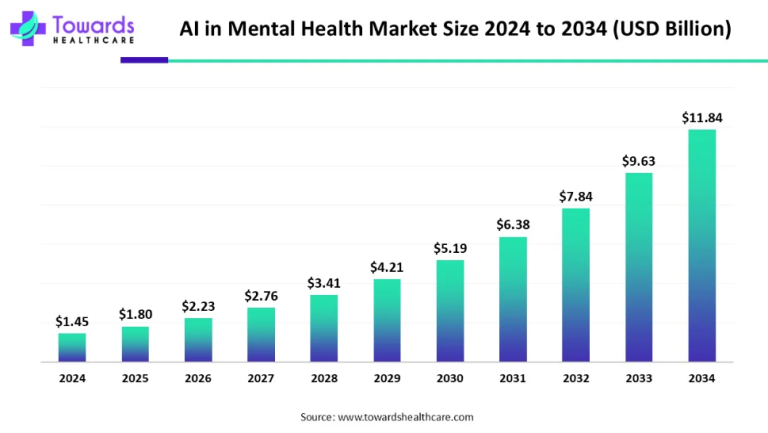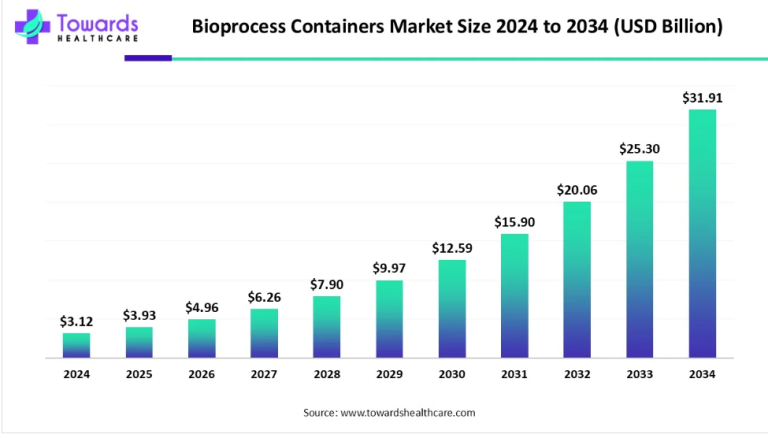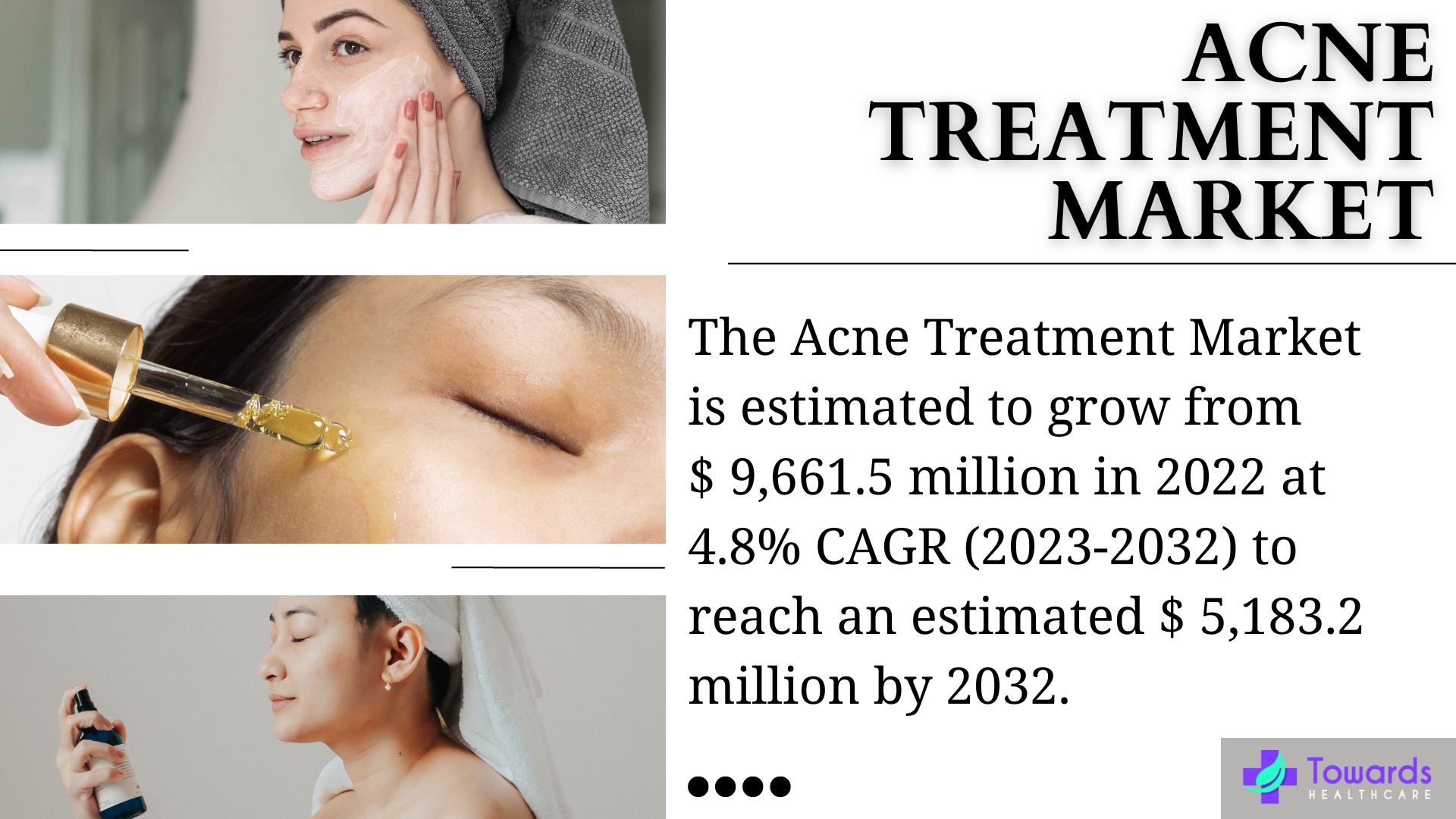
In the realm of skincare, the global acne treatment market is on a trajectory of significant expansion. Commencing from a valuation of USD 9,615.6 million in 2022, the market is anticipated to experience a steady Compound Annual Growth Rate (CAGR) of 4.8% from 2023 to 2032. This growth projection foresees the market reaching an estimated USD 15,183.2 million by 2032, propelled by the increasing number of clinical approvals and product launches.
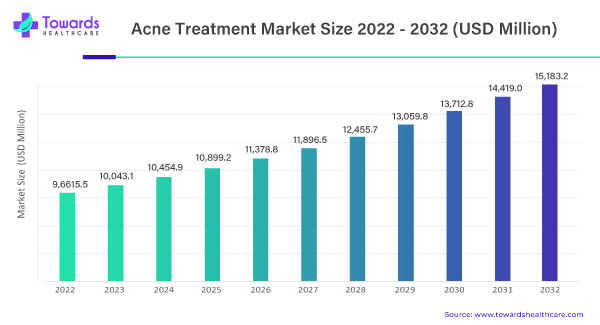
Catalysts Driving the Growth
Surge in Clinical Approvals
The upswing in clinical approvals stands as a primary catalyst behind the anticipated growth in the acne treatment market. As research and development efforts yield promising results, regulatory approvals for new and improved acne treatments contribute significantly to market expansion. The influx of clinically validated solutions enhances the arsenal available for dermatologists and consumers alike.
Proliferation of Product Launches
A surge in product launches further fuels the market’s growth dynamics. Skincare and pharmaceutical companies are actively introducing innovative and targeted solutions for acne treatment market. These product launches encompass a spectrum of formulations, including topical treatments, oral medications, and advanced skincare technologies. The market responds to consumer demand for effective and diverse acne management options.
Breaking the Stigma, Clearing the Way, & Creating the Face of the Future with Advanced Acne-Care
Acne treatment involves a range of therapies and procedures aimed at managing or eliminating acne, a common skin condition that occurs when hair follicles become clogged with oil and dead skin cells. Acne can cause pimples, blackheads, whiteheads, and cysts on the face, neck, chest, and back, and it can have a significant impact on a person’s self-esteem and quality of life.
Treatment options for acne depend on the severity of the condition and can include topical medications such as benzoyl peroxide, retinoids, and antibiotics, oral medications such as antibiotics and isotretinoin, and various medical procedures such as chemical peels, light therapy, and laser therapy. In addition, lifestyle changes such as avoiding oily or greasy cosmetics, keeping the skin clean and dry, and avoiding squeezing or picking at pimples can also help manage acne.
It’s essential to note that not all acne treatments work for everyone, and finding the right treatment can sometimes take time and experimentation. It’s crucial to work with a healthcare provider or dermatologist to determine the best treatment plan for your individual needs.
Therapeutic Devices: Paving the Way for Market Growth
The continuous advancements in therapeutic devices and technology have led to the development of various innovative treatment options for acne. For instance, light-based devices like blue light therapy have gained immense popularity as a non-invasive and effective treatment option for mild to moderate acne.
As of 2022, the therapeutic devices segment was the highest contributor to this market, with a 62.55% revenue share, and is anticipated to exhibit a 60.25 % market share by 2032, registering a CAGR of 4.4% from 2023 to 2032. While the medication segment is projected to witness the fastest growth with a CAGR of 5.5% (2023-2032).
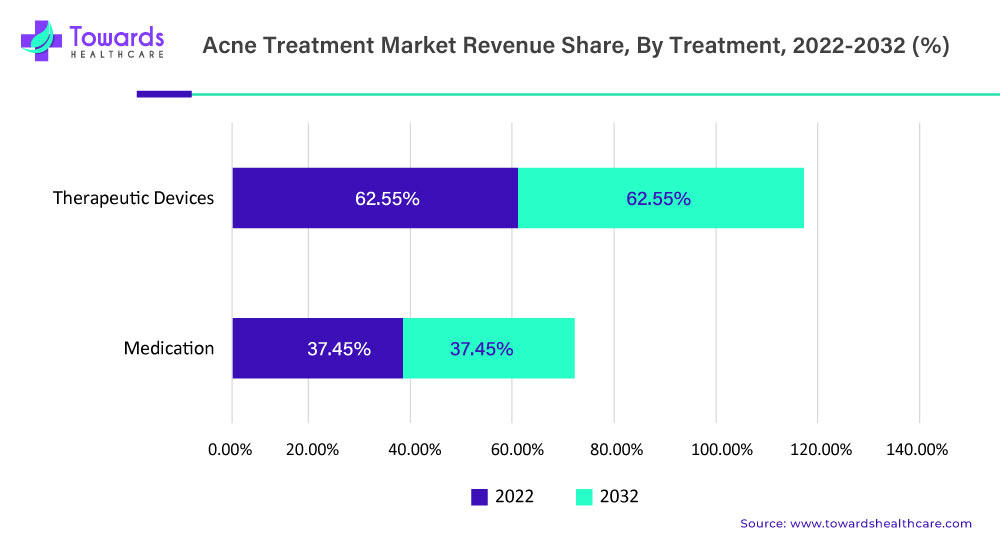
Therapeutic devices have emerged as a promising solution for acne treatment, paving the way for market growth. The demand for these devices is increasing due to their effectiveness in treating acne and reducing the associated scarring. Therapeutic devices such as light therapy devices and micro-needling devices are gaining popularity as they offer a non-invasive and painless solution for acne treatment. Additionally, these devices have minimal side effects and offer faster recovery times, making them a preferred choice for many patients.
The growth for acne treatment market devices is also driven by factors such as the increasing prevalence of acne, rising awareness about the availability of advanced acne treatment options, and the growing demand for minimally invasive cosmetic procedures. Moreover, the increasing disposable income of people and the expanding healthcare infrastructure in emerging economies are further driving the growth of the acne treatment market devices.
Over the course of the projection period, it is also anticipated that developing trends in handheld and portable therapeutic devices would boost market demand. Additionally, the demand for such devices is being further boosted by the growing number of spas and therapeutic treatment facilities around the world.
Dermatology Clinics are Driving Acne Treatment Market Growth
Dermatology clinics are playing a significant role in driving the growth of the acne treatment market. These clinics provide specialized care and treatment for various skin conditions, including acne. Dermatology clinics offer a wide range of treatment options, such as medications, therapies, and cosmetic procedures, for acne patients.
These clinics are also investing in advanced technologies and devices to improve the effectiveness of acne treatment market. For instance, many clinics now use laser therapy, photodynamic therapy, and other advanced devices to treat acne. These technologies have been proven to be effective in reducing acne lesions and improving the overall appearance of the skin.
Dermatology clinics accounted for the largest revenue shareholder by treatment, in 2022 with around 72.12% market share in the acne treatment market.
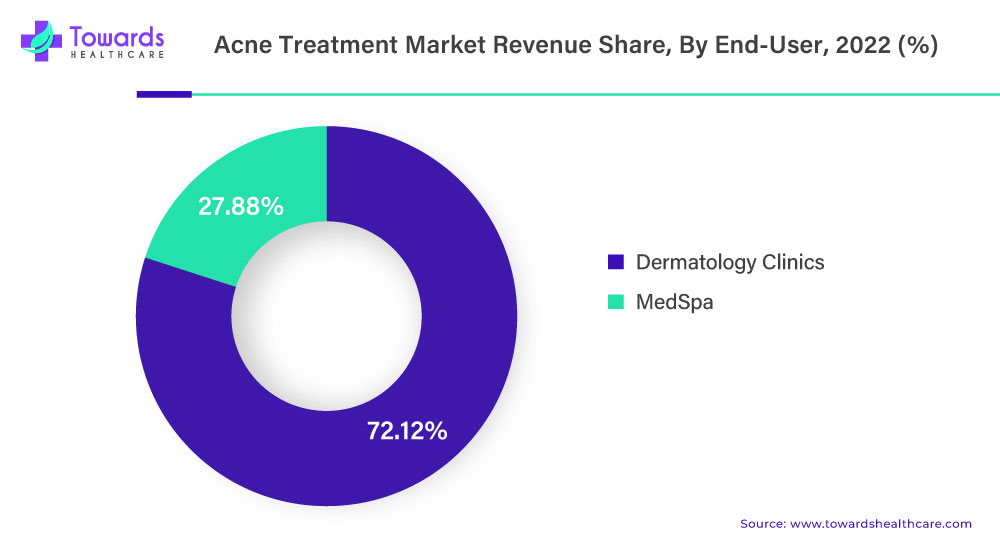
Furthermore, dermatology clinics also provide follow-up care and support for acne patients, helping them to manage their condition effectively. This has led to increased patient satisfaction and improved outcomes, which in turn has contributed to the growth of the acne treatment market.
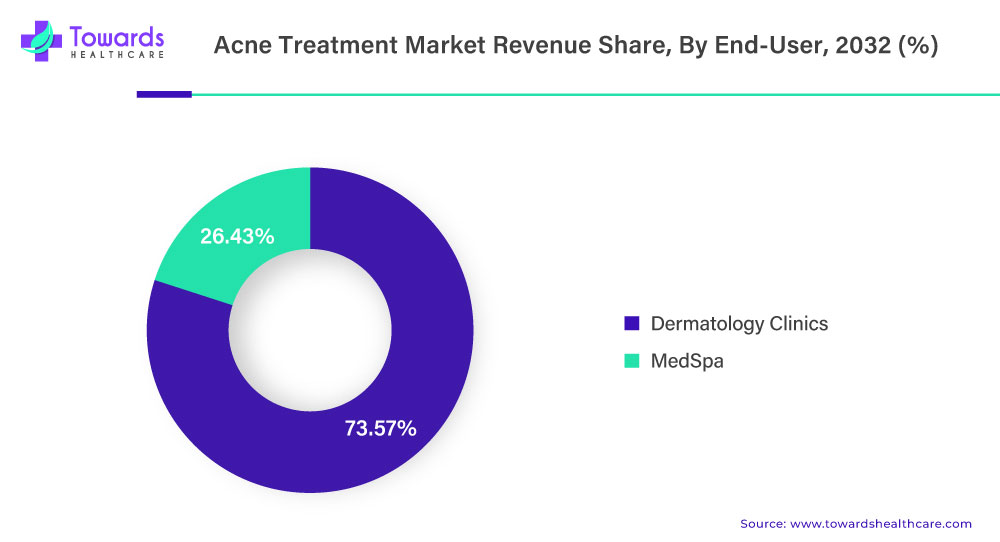
North America is Projected to Continue its Dominance
The North America acne treatment market is a significant contributor to the global market and is expected to continue to grow in the coming years. The market growth in North America can be attributed to several factors, including a high prevalence of acne in the region, an increasing demand for advanced acne treatment market, and the presence of major market players in the region.
The high prevalence of acne in North America is one of the primary drivers of market growth. According to the American Academy of Dermatology Association, acne is the most common skin condition in the United States, affecting up to 50 million Americans annually. This high prevalence has led to a significant demand for advanced acne treatment market, which is expected to drive market growth in the region.
Additionally, the presence of major market players, such as Johnson & Johnson, Nestle SA, and Allergan, in the region is another driving factor. These companies are investing in research and development activities to introduce new and advanced acne treatments, which is expected to further propel market growth in North America.
North America was the highest contributor to this market, with 45.08% revenue share in 2022, and is anticipated to reach 46.91% revenue share by 2032, registering a CAGR of 5.2% from 2023 to 2032.
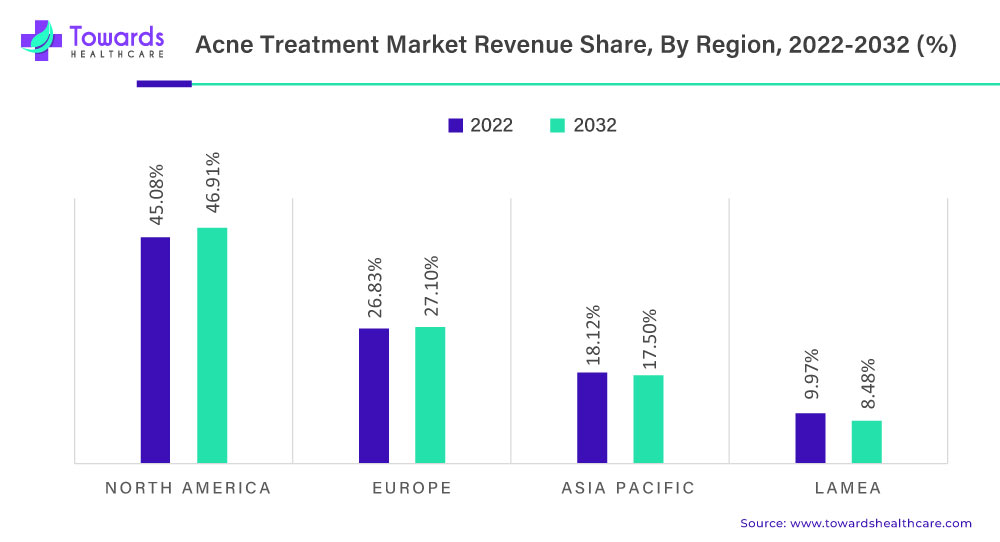
Due to the greater frequency of acne among residents of the region’s countries, the North American market accounted for the greatest revenue share. The main causes of acne prevalence growth are poor dietary habits and rising stress levels. The demand for different topical therapies has increased as a result, and new FDA-approved medications have been developed to treat acne that is hormonally based. Winlevi, a topical adrenoceptor inhibitor that prevents hormones from creating more sebum, received FDA approval on September 16, 2020.
Empowering Healthcare with Clinical Approvals and Drug Launches
Clinical approvals and drug launches play a crucial role in empowering the healthcare industry, and the same can be said for the acne treatment market. The introduction of new drugs and therapies has transformed the landscape of acne treatment, providing more options to patients and clinicians alike.
In recent years, the acne treatment market has witnessed several clinical approvals and drug launches, driving market growth across the globe. The approval of new drugs and therapies has not only provided more treatment options but has also encouraged pharmaceutical companies to invest more in research and development. This, in turn, has led to the discovery of novel drugs and therapies, further driving market growth. Additionally, clinical approvals and drug launches have increased competition in the market, leading to more affordable and accessible treatments for patients.
Moreover, clinical approvals and drug launches have helped in addressing the unmet needs of patients with acne, particularly those with severe or persistent acne. With the availability of new drugs and therapies, patients can now receive more personalized treatment plans that cater to their specific acne type and severity.
More people are seeking treatment to address lesions, inflammation, and scarring as a result of acne’s visible nature. And since there is such great demand, acne remedies are constantly changing and evolving. Manufacturers have become aware of the condition’s rising incidence among teenagers and adults, which has increased the demand for treatments. The major goal of drug development is to treat acne, which is challenging to do safely and effectively. Most of the players in the market are concentrating on releasing unique pharmaceuticals to meet demand, which is the main trend for the market’s growth. Some of the recent approvals of drugs and launch of drugs include:
- In May 2023, Bausch Health Companies Inc. and its dermatology subsidiary, Ortho Dermatologics, announced that the United States Food and Drug Administration (FDA) accepted the New Drug Application (NDA) for IDP-126, which is under investigation, as of May 2023.
- In July 2022, underneath the label MINYM, Glenmark Pharmaceuticals introduced the first topical Minocycline 4% Gel for the treatment of moderate to severe acne. A powerful antibacterial gel with a notable anti-inflammatory effect is minocycline. In addition, compared to other topical antibacterial formulations, it has the lowest MIC90.
- In March 2022, Galderma announced the launch of Twyneo cream in the United States for the topical treatment of acne vulgaris in patients whose age is 9 years or older. Twyneo is a fixed-dose mixture of the topical antibiotic benzoyl peroxide 3%, the retinoid, and tretinoin 0.1%.
- In November 2021, Sun Pharmaceutical Industries launched Winlevi cream useful in the treatment of acne vulgaris in the U.S. market which was previously approved by the U.S. FDA in August 2020
- In June 2020, Thayer launched acne tailored skincare product line
The approval of these drugs has significantly impacted the acne treatment market, providing dermatologists and patients with more treatment options. This has, in turn, boosted market growth and paved the way for further innovations in the field. Thus, clinical approvals and drug launches have played a significant role in empowering the healthcare industry and the acne treatment market. They have provided clinicians and patients with more treatment options, increased competition, and encouraged further research and development. As such, they will continue to drive market growth in the years to come.
From Shame to Confidence: The Evolution of Acne Treatment in Aesthetic Medicine
Acne treatment market has come a long way over the years, from being a source of shame and embarrassment for those who suffer from it to a condition that can be confidently and effectively treated in aesthetic medicine. Advances in technology and research have led to the development of innovative treatments that have transformed the lives of millions of people worldwide.
One of the most significant advances in acne treatment market is the use of laser therapy. Laser treatments for acne work by penetrating the skin with high-intensity light, which targets and destroys the bacteria responsible for causing acne. This therapy can also stimulate collagen production, which can improve the appearance of acne scars. Laser therapy is a non-invasive treatment that is safe, effective, and produces long-lasting results. Another major development in acne treatment market is the use of chemical peels. Chemical peels involve applying a solution to the skin, which causes the top layer to peel off, revealing smoother, more youthful-looking skin.
These peels can help unclog pores, reduce inflammation, and improve the overall appearance of acne-prone skin.
Additionally, aesthetic medicine has seen the rise of combination therapies, which involve using multiple treatments simultaneously or sequentially to achieve optimal results. For example, a combination of laser therapy and chemical peels can be used to treat moderate to severe acne and reduce the appearance of scars.
Furthermore, the increasing focus on aesthetics is also expected to support the growth of the market in the years to come. People are now more conscious and focused on their appearances with acne treatment market gaining substantial importance. Acne is among the most frequent reasons for visits to aesthetic professionals. On the one hand, chains of cosmetic clinics are merging to improve their growth prospects.
On the other hand, a great number of new medical specialists are entering the market to offer services in the field of aesthetics, such as skin care treatments including acne. Patients now have more alternatives for where to get treatment because of the proliferation of aesthetic service providers. More than 500 aesthetic clinics and care facilities have raised billions of dollars from investors over the past five years, making them the fastest-growing sector of the industry.
Thus, the evolution of acne treatment in aesthetic medicine has transformed the way acne is perceived and treated. People no longer have to suffer in silence or hide their acne, as there are now effective and safe treatments available that can help them achieve clear, healthy-looking skin and boost their confidence.
Accessible and Convenient: The OTC Medication Revolution
Over-the-counter (OTC) medications have become a popular choice for consumers seeking convenient and affordable healthcare solutions. The acne treatment market is no exception, as OTC medications have played a significant role in meeting the growing demand for accessible and cost-effective acne treatments.
OTC medications for acne treatment market are widely available in drugstores and supermarkets, and they do not require a prescription. These medications often contain active ingredients such as benzoyl peroxide, salicylic acid, or sulfur, which work to reduce inflammation and unclog pores. OTC medications offer a convenient and accessible alternative for individuals with mild to moderate acne who may not require prescription medication or dermatologist supervision.
The demand for OTC acne treatments has increased in recent years, with many consumers seeking affordable and convenient options for managing their acne. This has led to the growth of the OTC acne treatment market, which is expected to continue expanding in the coming years.
In addition to convenience and affordability, OTC acne medications also offer a degree of anonymity to individuals who may feel embarrassed or self-conscious about their acne. By being able to purchase and use acne treatments without a prescription or medical supervision, individuals may feel more empowered to take control of their acne and improve their skin health.
Thus, the growth of the OTC acne treatment market reflects the increasing demand for accessible and affordable healthcare solutions. These medications have become an important part of the acne treatment market landscape, offering a convenient and cost-effective alternative to prescription medication and dermatologist visits.
Addressing the Issues Related to Side Effects of Using Drugs and Counterfeiting Medication
The use of drugs in acne treatment market, like any other medical treatment, can have side effects. Some common side effects of acne medications include dryness, redness, peeling, and irritation of the skin. More serious side effects such as allergic reactions, liver damage, and depression are rare but possible.
Moreover, there is a growing concern about counterfeit acne medications in the market, which can be dangerous for patients. These counterfeit medications may not contain the active ingredients necessary to treat acne or may contain harmful substances that can cause adverse reactions.
To address these issues, regulatory bodies like the FDA have implemented strict regulations on the manufacturing and distribution of acne medications. Consumers are advised to purchase acne medications from trusted sources and to always read the label and instructions carefully before use.
Counterfeit medications and the potential side effects of acne drugs can impact market growth as patients may lose trust in the efficacy and safety of these treatments. However, with proper regulations and consumer awareness, the market can continue to grow and provide effective and safe solutions for acne treatment market.
Unveiling the Impact on Skincare Practices
Holistic Approach to Acne Management
The evolving landscape of acne treatment reflects a holistic approach that goes beyond traditional remedies. Consumers seek comprehensive solutions that address the root causes of acne, offering not only symptom relief but also long-term management. The market’s response involves a diversified portfolio of treatments catering to different skin types and severities.
Technological Advancements in Skincare
Technological innovations play a pivotal role in reshaping acne treatment. Advanced skincare technologies, including laser therapies, light-based treatments, and personalized skincare solutions, contribute to the market’s transformation. These innovations provide dermatologists and consumers with options that align with individual preferences and treatment goals.
Projections and Industry Dynamics
Sustainable Growth and Market Dynamics
The estimated CAGR of 4.8% signals sustainable growth in the acne treatment market. This growth is underpinned by the persistent demand for effective acne solutions, coupled with the proactive approach of healthcare professionals and skincare enthusiasts alike. The market dynamics reflect a continuous quest for improved formulations and treatment modalities.
Consumer Awareness and Demand
Growing consumer awareness regarding skincare practices and the availability of diverse treatment options contribute to market dynamics. The demand for acne treatment is not merely driven by cosmetic concerns but is deeply rooted in individuals’ desire for healthy and clear skin. This evolving consumer mindset shapes the market’s landscape and fosters innovation.
Shaping a Future of Healthy Skin
Integration of Preventive Skincare
The transformative impact of the acne treatment market extends beyond reactive solutions to preventive skincare practices. Education and awareness initiatives emphasize the importance of preventive measures in managing acne. Skincare routines that focus on preventing breakouts and maintaining skin health become integral components of individuals’ daily lives.
Accessibility and Inclusivity in Acne Treatment
The future of acne treatment embraces accessibility and inclusivity. The market endeavors to provide solutions that cater to diverse skin types, ethnicities, and age groups. Inclusivity in product formulations and treatment approaches ensures that acne management is personalized and effective for a broad spectrum of individuals.
A Clear Path Ahead
The surge in the global acne treatment market signifies a clear path ahead for skincare enthusiasts and healthcare professionals alike. From USD 9,615.6 million in 2022 to an estimated USD 15,183.2 million by 2032, the market reflects a commitment to advancing acne management. As innovations continue to unfold, embracing clinical approvals, and product launches, the future promises not only clearer skin but also a diversified and inclusive approach to skincare.
